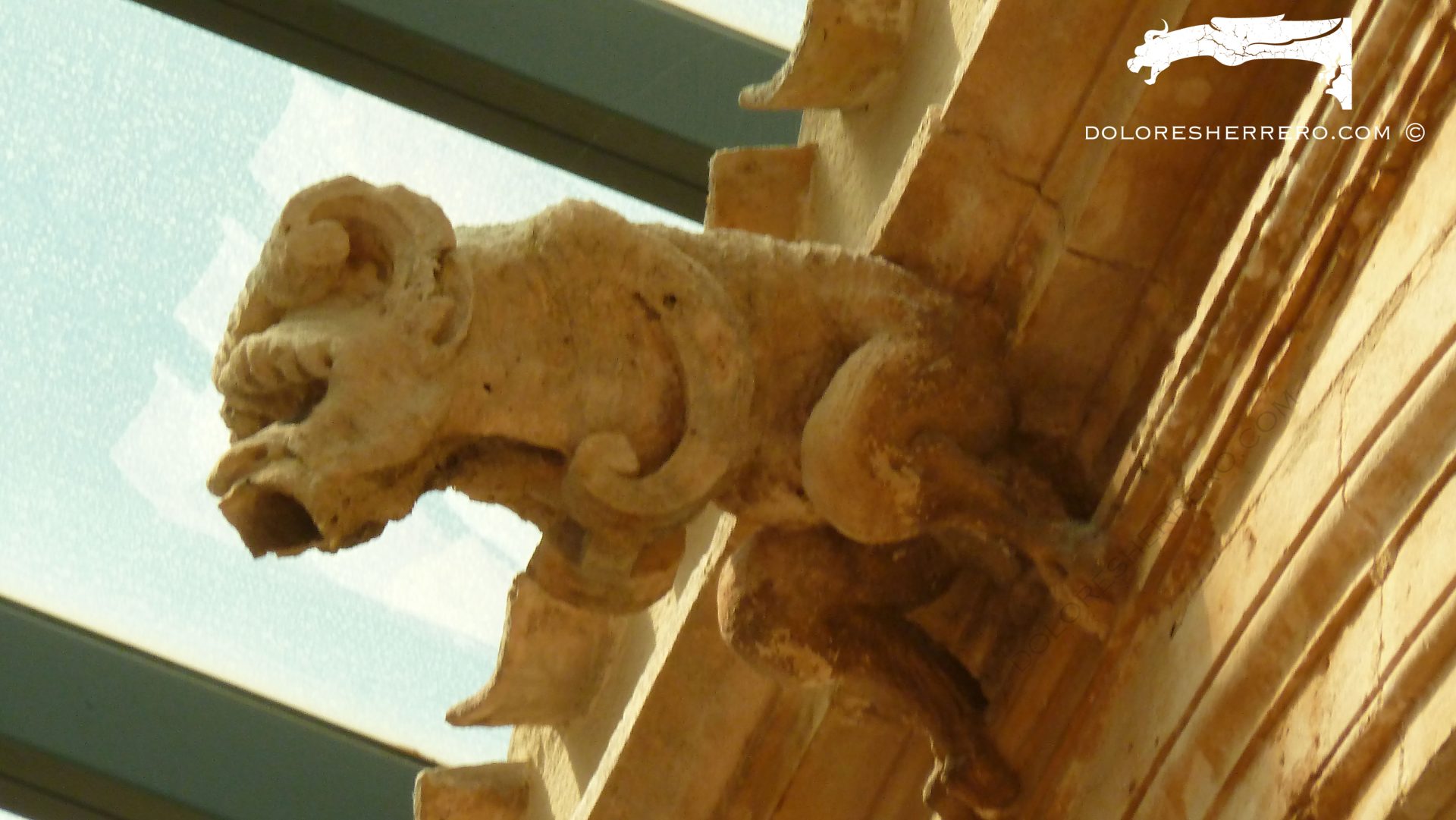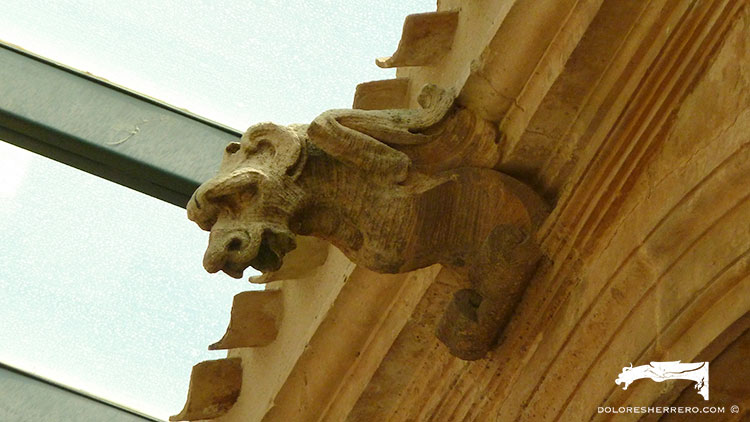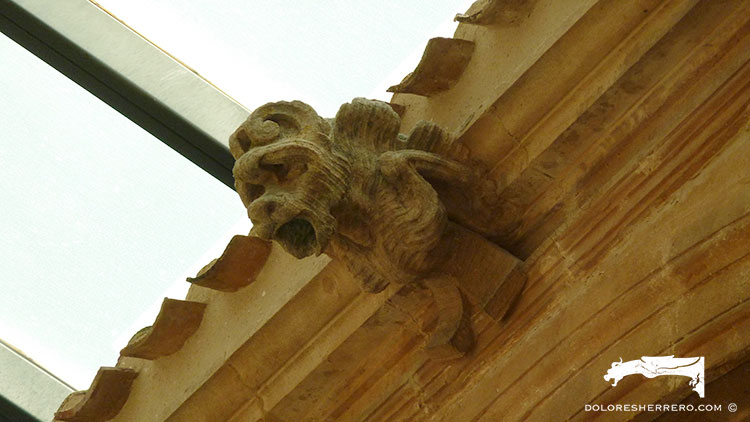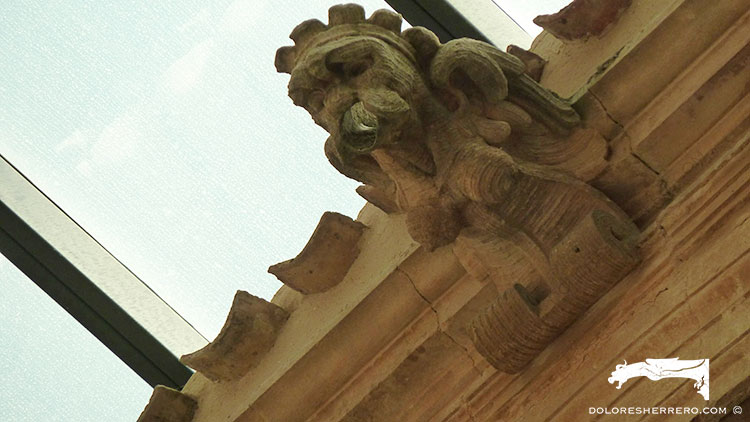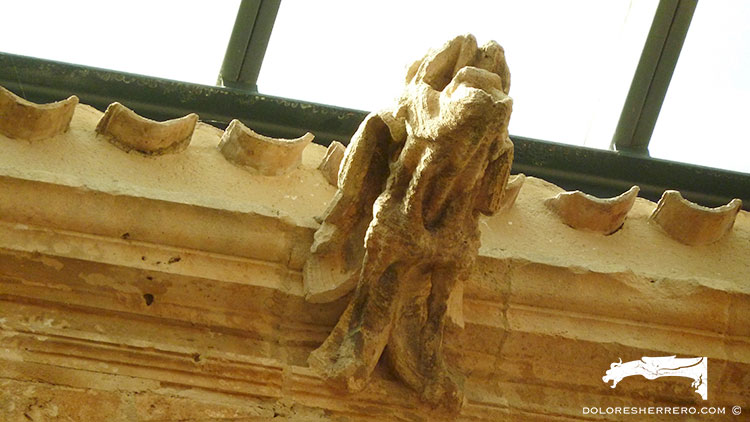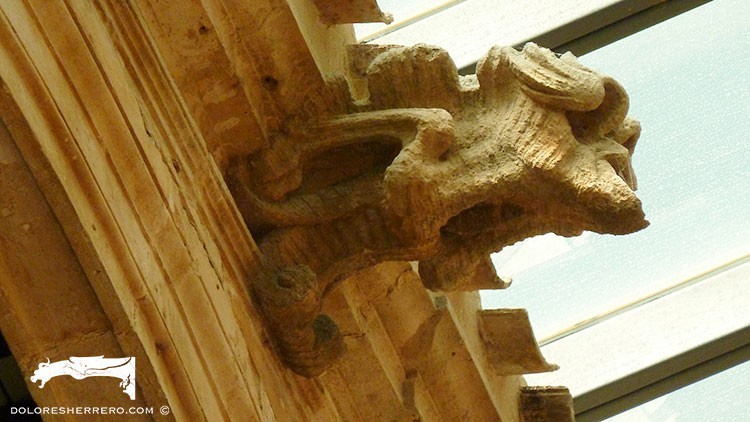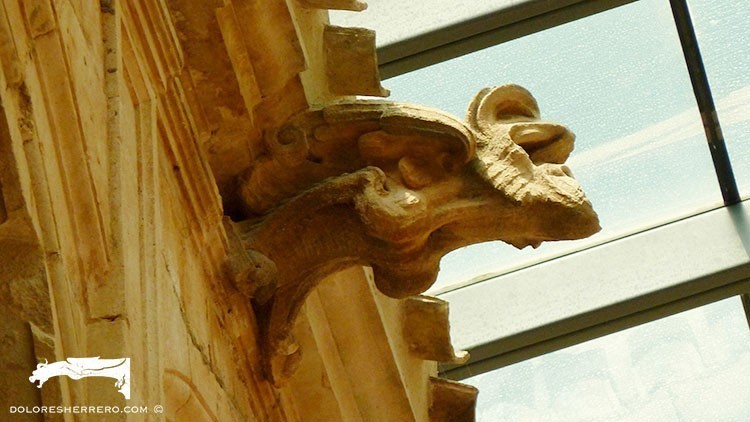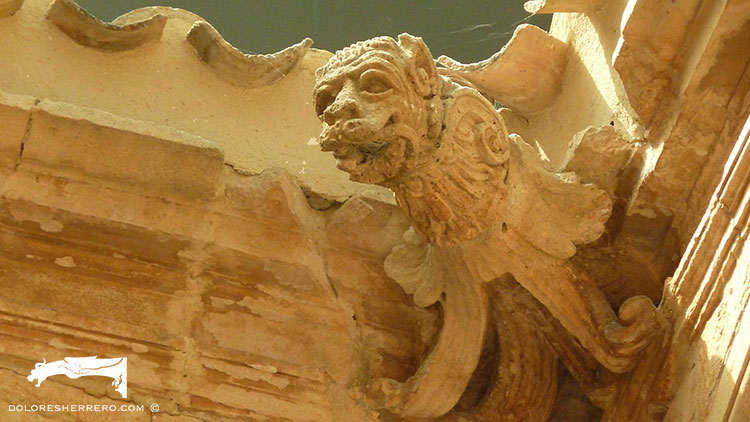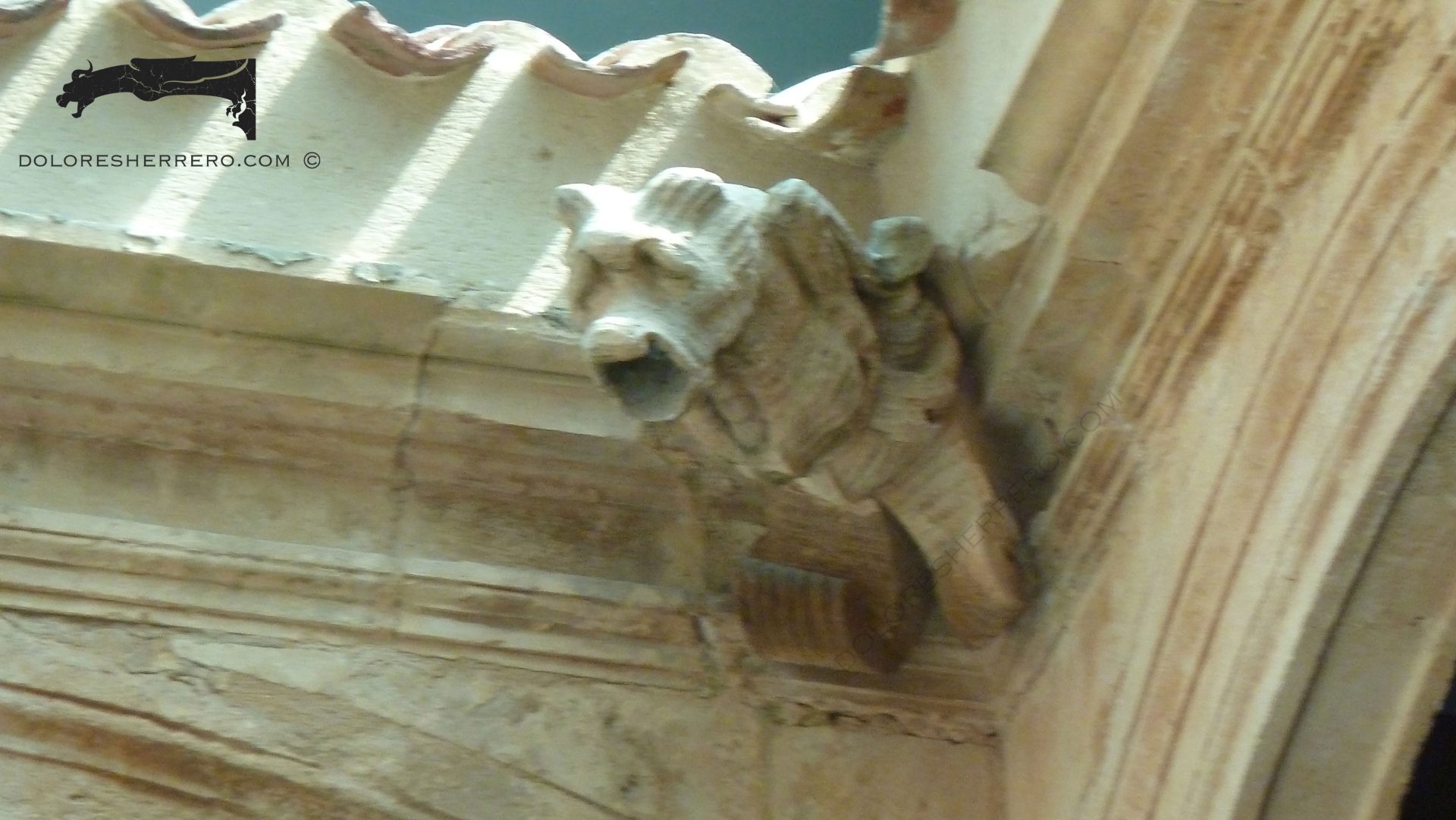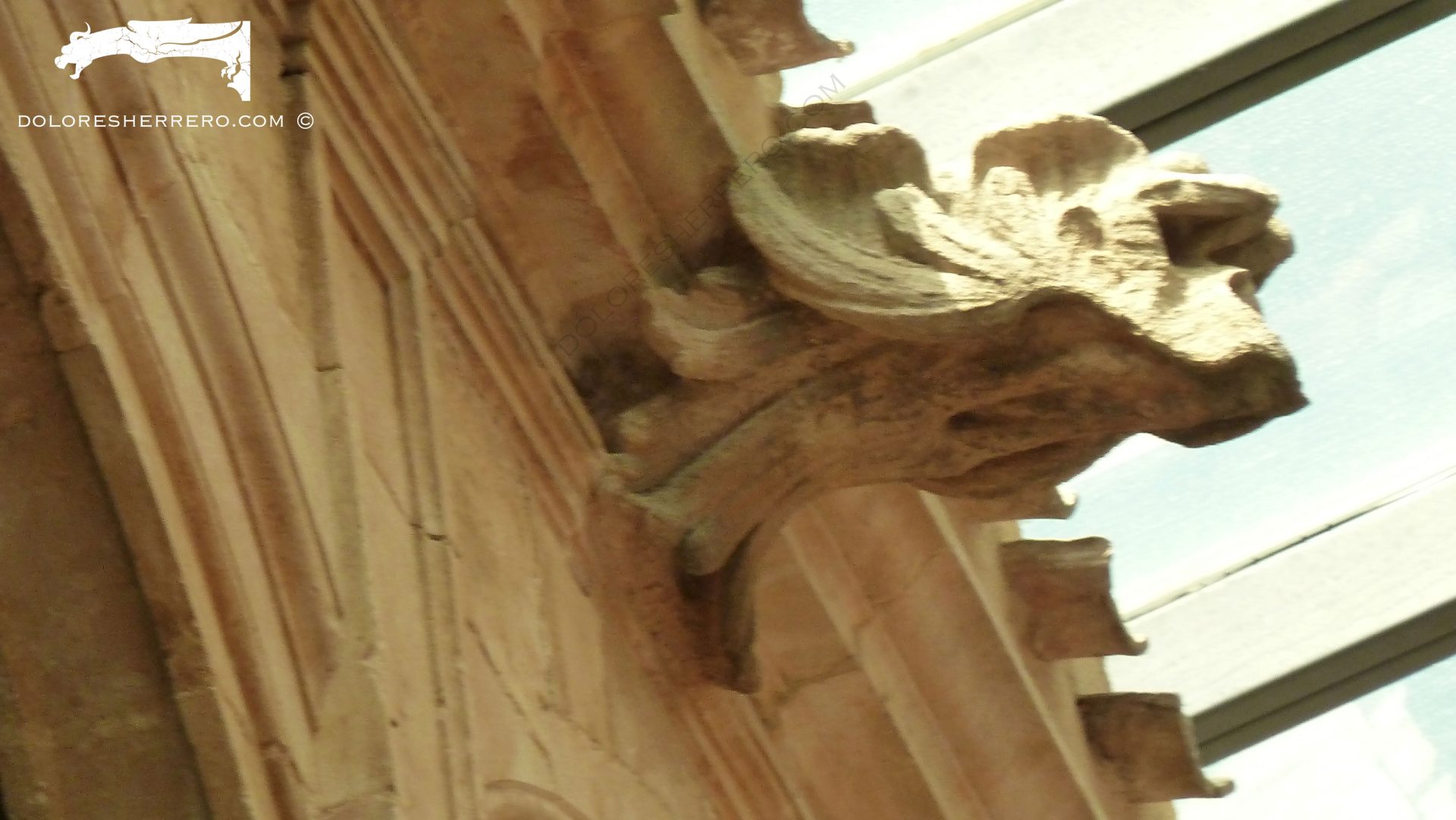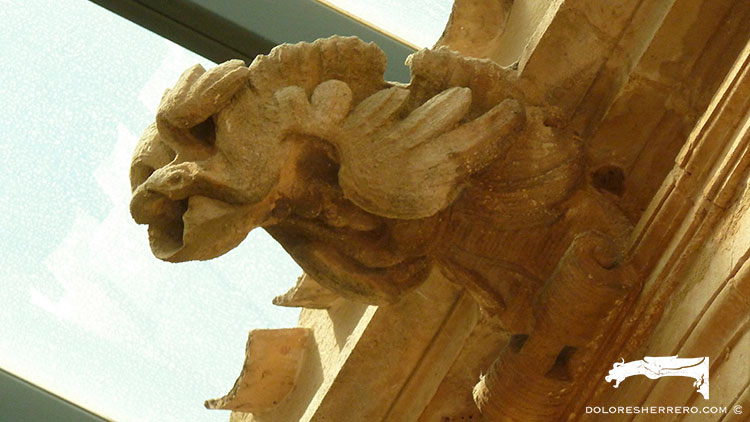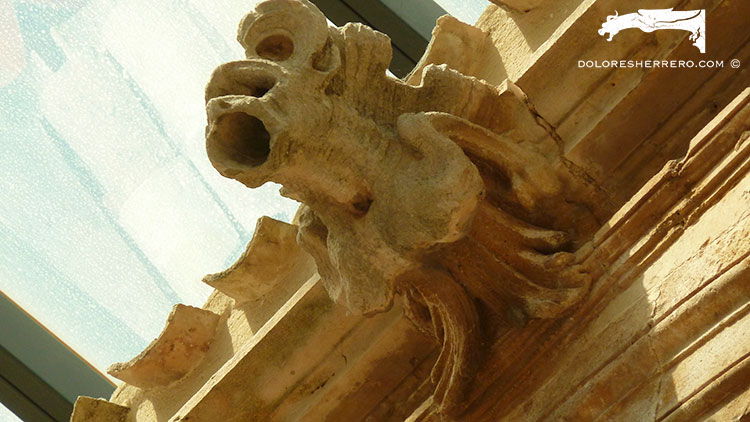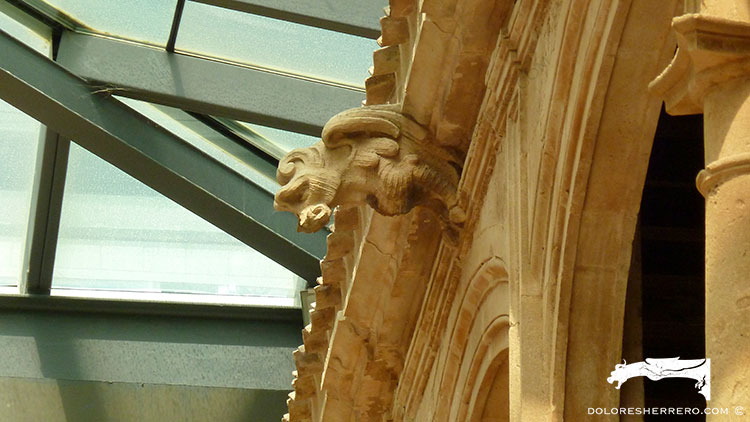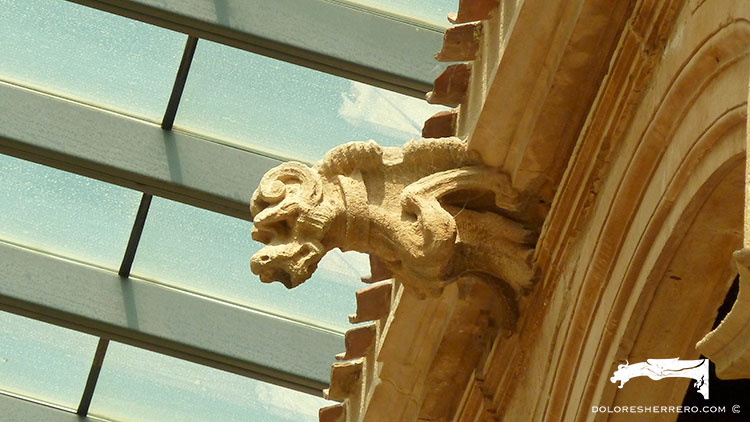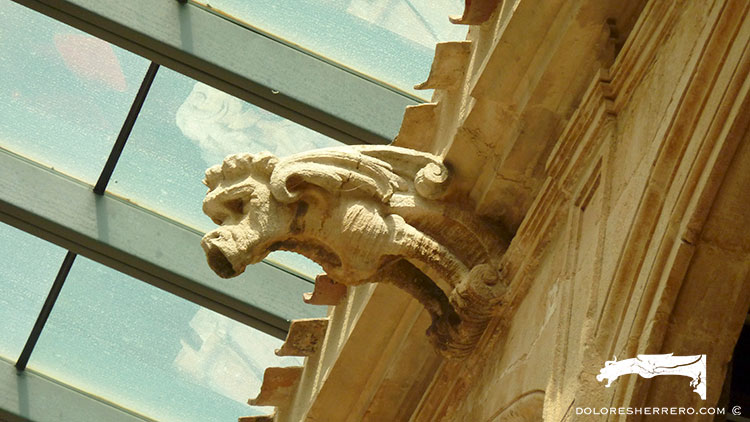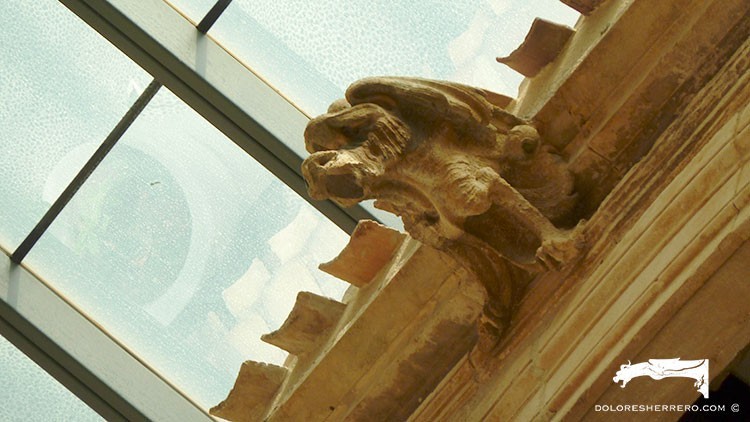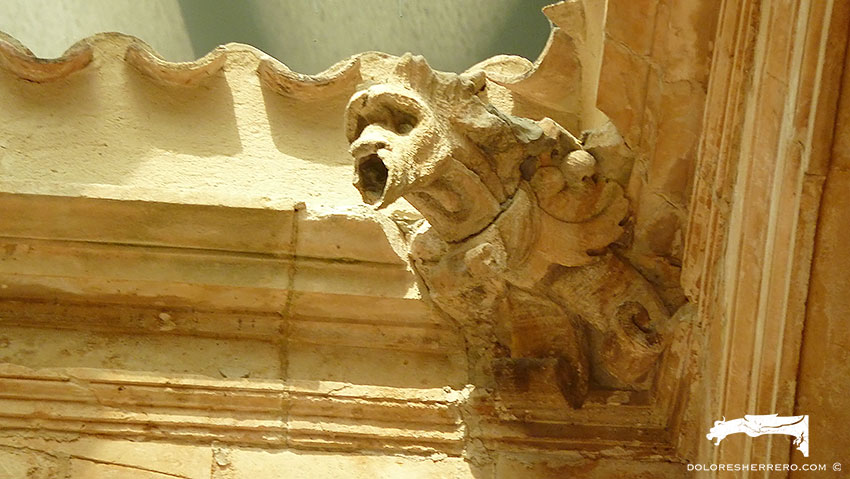The University of Santa Catalina in El Burgo de Osma (Soria) was founded by the bishop and benefactor Pedro Álvarez de Acosta (1539-1563) with the idea of setting up the first centre of learning in the province of Soria. Building work on what would eventually be the university started in 1550.
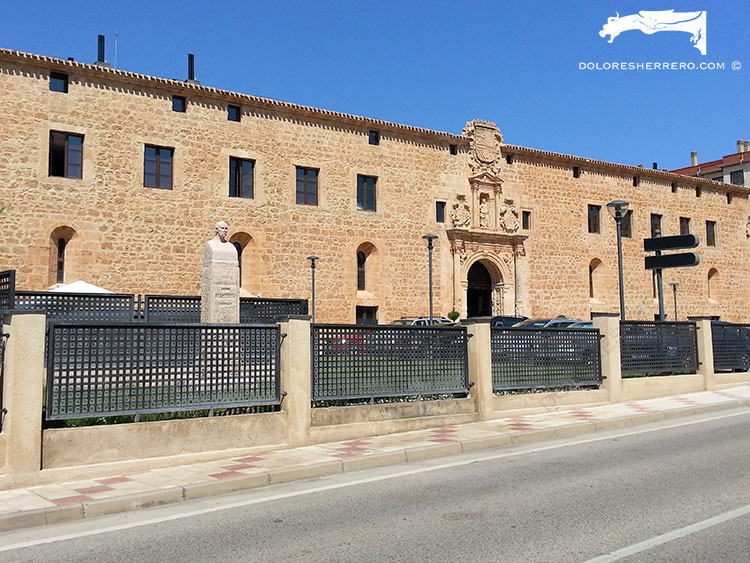
It is built on a square layout and the rooms or spaces are arranged around a two-storey courtyard with magnificent arcades: the arches on the lower floor are round and on the upper floor they are segmental. The building currently houses a hotel.

Gargoyles
And it’s precisely in the courtyard where you find the peculiar, fantastical gargoyles in this former university. They all evoke Renaissance grotesques, a wildly imaginative and extravagant type of decoration, showing figures packed with unique, fanciful features. These are gargoyles with small monsters or demons which, although they are all in the same sculptural style, have some really varied and imaginative details. Features we can make out include spiral or leaf-shaped wings, long snouts with enormous mouths, prominent eyebrows with hollow eyes giving them a ghostly look, crests, a snake’s tail, tongue, dorsal crests, fur, curved horns, collars, pointed ears, breasts, patterns scratched on their bodies, Indian headdresses, sunken trachea, various kinds of legs (spiral, leaf-shaped, insect), flaps of skin, protuberances and wrinkles; all of which give them huge artistic beauty, expressiveness and aesthetic value.
A unique and marvellous repertoire of gargoyles that’s certainly worth seeing if you happen to be visiting this lovely town.
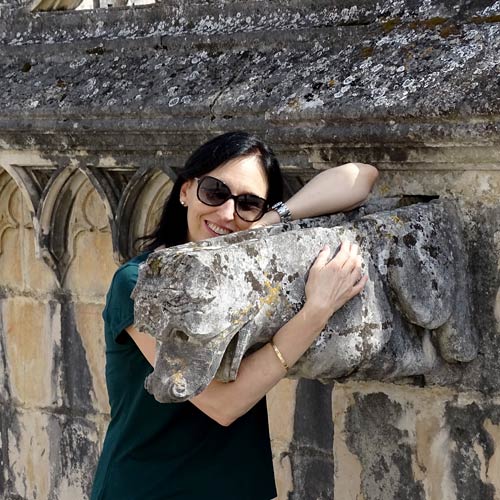
Doctor of Art History and researcher specializing in the study of gargoyles.
I am Dolores Herrero Ferrio, and my thesis, “An Approach to the Study of Gargoyles of Gothic Cathedrals in Castilla and León”, is dedicated to the study of these fascinating figures.
If you like gargoyles and art history, you will also enjoy my book, “The Gargoyle and Its Iconography,” a book I have written with great care for those interested in the world of gargoyles.
I have created my own Encyclopedia of Gargoyles, a Gargopedia to share with you, where you will discover all the secrets and wonders of these enigmatic sculptures.
I hope you enjoy this Gargopedia as much as I have enjoyed creating it, and remember that each gargoyle has a story to tell, and here you will discover them all.
